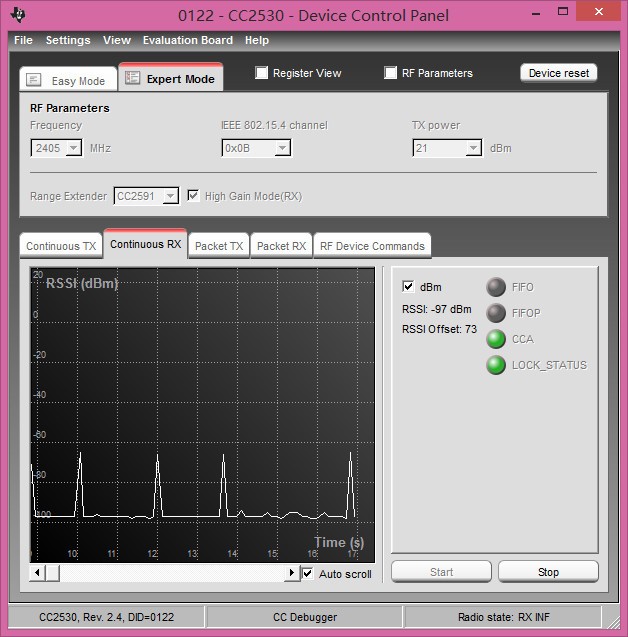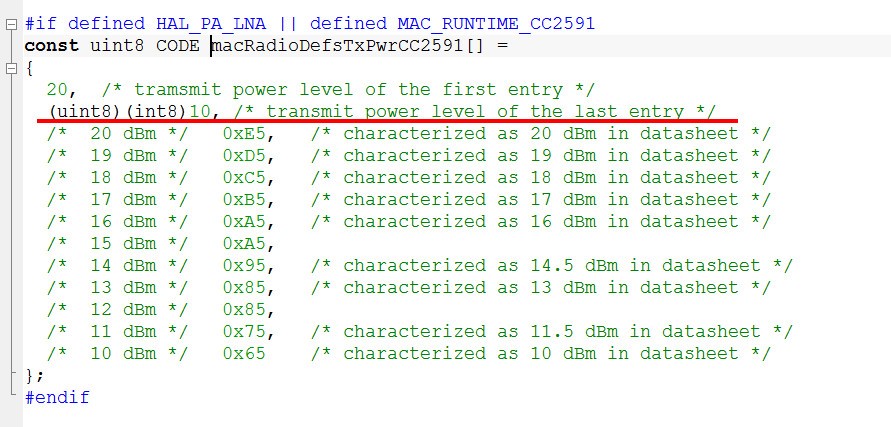hi ,
there are two device , one is ZED which was always in searching network
the other one was connected the CC debugger to the PC ,and open the smartRF studio 7 Continueous RX window, as below
there are so many question about this process
1. nomatter what value of Txpower i had set , there is nothing different happen in the Continueous RX window
2. when i turn off the ZED ,stop searching, and there are not any more devices, The Continueous RX window also could catch something
3.what is the highest value in Continueous RX window ,is that real searching network signal?
4. how could i catch the RSSI value in real product working moment
BR!




